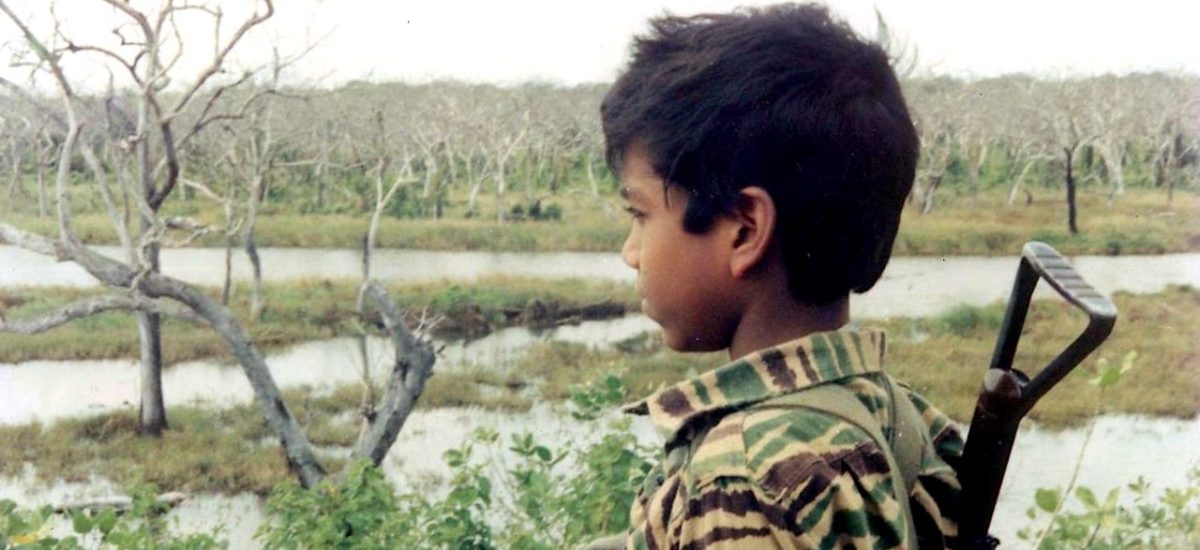Photo courtesy of Rediff
Kannan was ten when he joined the LTTE; he left when he was fourteen. His testimony on what he had experienced as a child soldier recruited against his will and forced into combat revolutionised international human rights law when Amnesty International insisted on including acts by non-state groups as human rights violations. From there emerged a strong coalition of international human rights groups against child recruitment, which has successfully lobbied for sweeping reforms. A special UN convention was formulated, there were two Security Council resolutions and an International Labour Organisation Convention. Recruitment of children for combat purposes is now a war crime and a crime against humanity – the International Criminal Court’s first trial was on child recruitment. The UN gives special status to the Special Representative on Children and Armed Conflict.
Based on all this, the LTTE was proscribed and fund raising for it was criminalised in 21 member states including most EU countries and the US. Several high ranking members of the LTTE weren’t granted asylum in member state countries because they recruited children.
Where’s Kannan now? Kannan lives alone in a Western country, a restless refugee granted asylum status.
Why? Kannan went to see his mother, who had been forced to move out of Jaffna by the LTTE during Operation Riviresa in 1995, launched by the army to capture the Jaffna peninsula from the LTTE. In Vavuniya, he was spotted by members of armed groups who opposed the LTTE and was severely tortured by two groups for being the prominent assistant to Mahathaya (who was later killed by Prabhakaran). Then they handed him to the army who handed him to the police. The Attorney General charged him for being member of the LTTE, four years after he had left. Unlike they who pleaded guilty to far greater crimes, Kannan was sentenced to five years imprisonment. After seven years in custody, due to a quirk in the criminal justice system, he was released in the area where he was arrested (Vavuniya). Then his nightmares began again. To leave Vavuniya, the government needed to give him a pass but it refused to do that so he was stuck there. By now, the ceasefire agreement was in effect that seemingly gave the LTTE license to kill informants. So, he had to hide from two political groups and the LTTE and persuade the government to let him come to his mother, who had by now got to Colombo.
All this was impossible. Finally, some friends smuggled him out of Vavuniya. He applied for asylum and now lives alone, away from all he knows and holds dearly. In his new home, he has few Sri Lankan friends. Sinhalese are uncomfortable with a Tamil. Tamils dislike him for being an ex-Tiger. For some, he is a traitor.
In all this time, he’s never given up standing by Lanka. He had friends who ran away from the LTTE whom he persuaded to surrender to the army. Three of them were among the 26 former child soldiers who were murdered in a government rehabilitation camp in Bindunuwewa.
He had calls from the few youth who escaped death and ran away after Karuna split with LTTE leader Vellupillai Prabhakaran. They gave testimonies to Alan Rock, Special Advisor the Special Representative of the Secretary General on Children and Armed Conflict and to journalist J. S. Tissainayagam. Alan Rock’s report was rejected by the government for reporting on the on-going recruitment by the Karuna group in the Eastern Province. Tissainayagam was sentenced to 20 years imprisonment for attempting to cause racial disharmony by bringing the Tamil community to disrepute among Sinhalese by saying the Karuna group was recruiting children.
It is useful to re-examine Mr. Rock’s report after his visit to Sri Lanka in 2006. He especially mentioned the Karuna group as being responsible for rounding up children as young as 13 to fight against the LTTE despite the objections of their parents. Under-age abductions were also reported to UNICEF.
“We encountered both direct and indirect evidence of security forces’ complicity and participation,” Mr. Rock said after a 10-day mission to the north and east. The military said it “vehemently denies having any involvement whatsoever” in abductions for the paramilitary group.
The LTTE was also well known as recruiting child soldiers to fight against the military. Its leaders cannot be prosecuted because they are dead but Vinayagamoorthy Muralitharan, better known as Karuna, or Colonel Karuna Amman as he known in the LTTE, entered parliament in 2008 and was made Minister of National Integration in 2009 by then president Mahinda Rajapaksa. He was also appointed Vice President of the SLFP.
Kannan also inspired activists to stand by the children of the North East. The Sri Lanka Democracy Forum (SLDF), mainly made up of Tamils, spent considerable resources on this matter. The Non Violent Peace Force attended all potential recruitment affairs such as temple ceremonies and managed to prevent large scale recruitment. The military surrounded the offices and houses of staff members of the Non Violent Peace Force and forced it to close its office. Most members of the SLDF had to leave the country due to threats from the LTTE and lack of support from the government.
My attention has been drawn to a video being circulated on social media urging us to not forget these child recruits. I am completely in agreement.
Let’s stand by these children. Let’s stop punishing the child who didn’t know better by arresting them and trying them. Don’t ask them to give evidence against people they are petrified of. Don’t ask them to sign monthly at army camps. And don’t follow them around as though they’re still criminals. Let’s instead divert these resources to schooling and training needs as well as psycho social support services.
Concentrate instead on the recruiters and their murderers. Investigate every claim of recruitment carefully. Support all international fact finding on it. Try those responsible at every available fora – let’s not wait for an “international court” – we can start in our own courts. And let’s have justice for those 26 children murdered in Bindunuwewa. Then we can demonstrate that we stand by these children too.

